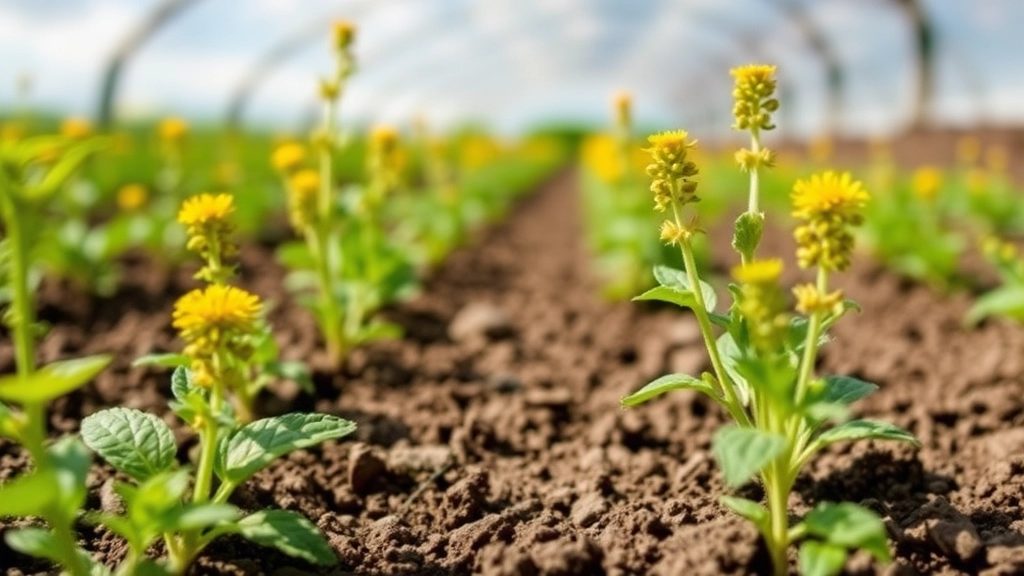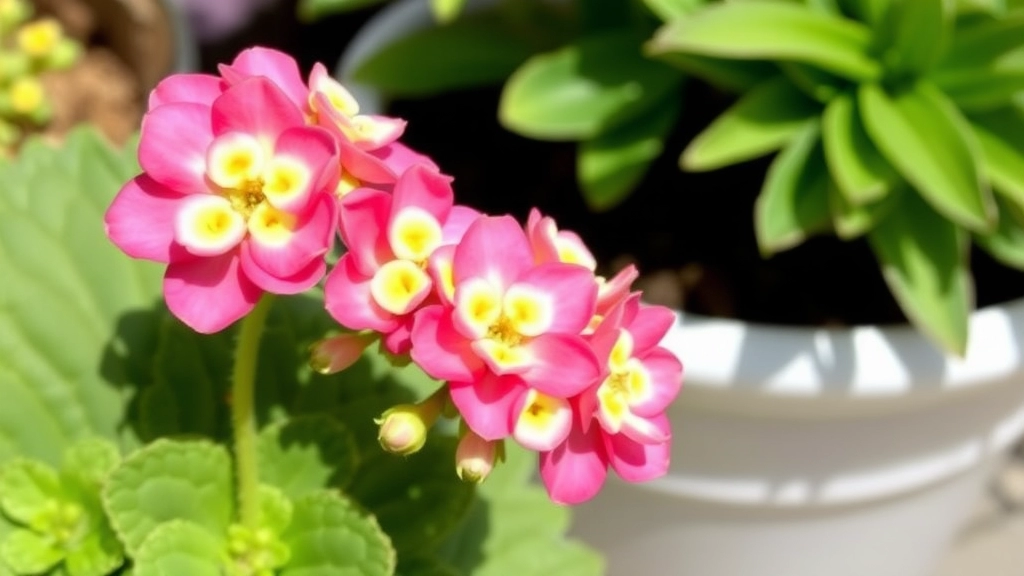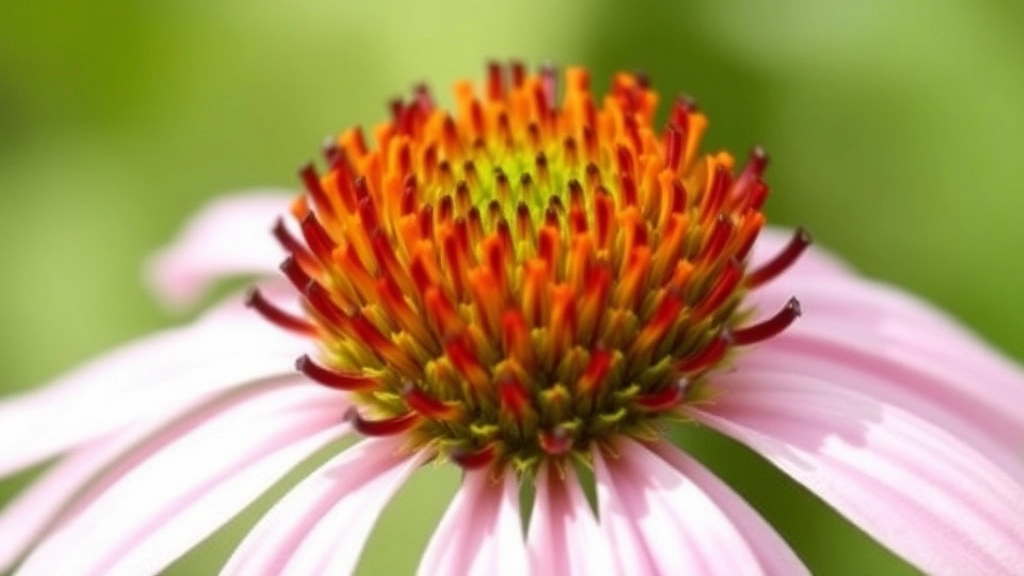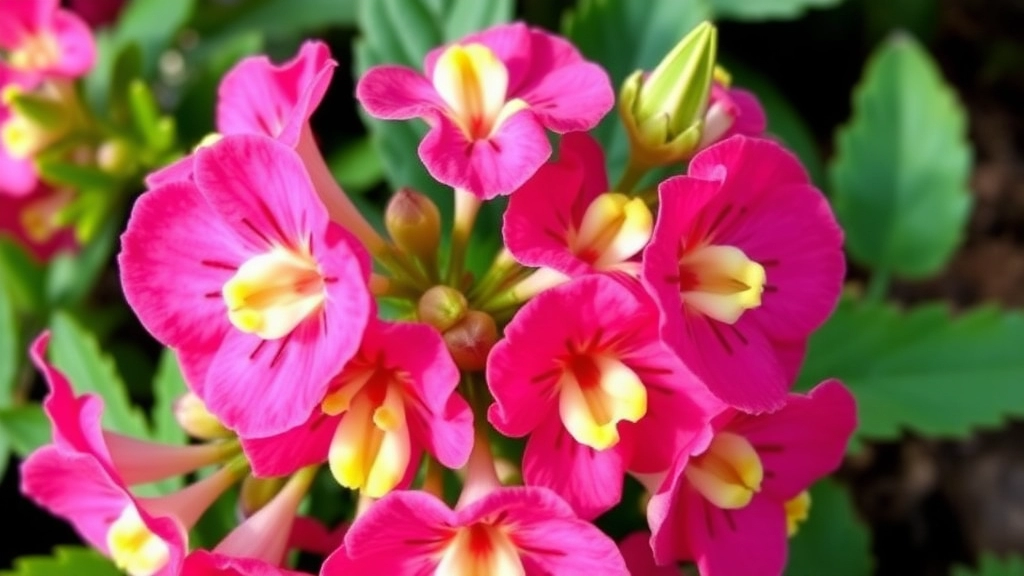Kalanchoe Flapjack Flowers
If you’re curious about Kalanchoe Flapjack Flowers, you’re in the right place. Also known as Paddle Plants or Kalanchoe thyrsiflora, these succulents are a visual delight with their unique, paddle-shaped leaves and stunning blooms. Understanding their characteristics and how to care for them can transform your gardening experience.
Growing Conditions
Growing Kalanchoe Flapjack Flowers requires the right soil and light conditions. These plants thrive in well-draining soil and love basking in bright, indirect sunlight. Proper watering and fertilisation are key to healthy growth, and with a little care, you can even encourage these beauties to bloom.
What to Expect
Stay tuned to learn more about:
- Propagation
- Common pests
- The ideal environment for your Kalanchoe Flapjack
When it comes to cultivating Kalanchoe Flapjack flowers, one might wonder about their unique traits and what makes them stand out in the succulent family.
Kalanchoe Flapjack, also known as Kalanchoe luciae, is renowned for its striking foliage and vibrant blooms.
Key Characteristics:
– **Leaf Structure:** The leaves are thick, fleshy, and paddle-shaped, resembling little pancakes stacked on top of one another. Their succulent nature allows them to store water, making them drought-resistant.
– **Colouration:** The leaves display a beautiful gradient of green, often tinged with red or pink at the edges, especially when exposed to bright sunlight. This colouration adds a striking visual appeal to any garden or indoor space.
– **Flowers:** The flowers emerge on tall stalks, typically in clusters. They are tubular in shape, often appearing in shades of yellow, orange, or red. These blossoms can attract pollinators, adding life to your garden.
– **Blooming Season:** Kalanchoe Flapjacks usually bloom in late winter to early spring, making them a delightful addition as the seasons change.
For more detailed care instructions, you can refer to the [Kalanchoe Flapjack Paddle Plant Care Guide](https://planthq.org/kalanchoe-flapjack-paddle-plant-care-guide/). Additionally, if you are interested in other varieties, the [Comprehensive Kalanchoe Species List for Gardeners](https://planthq.org/comprehensive-kalanchoe-species-list-for-gardeners/) is a great resource.
Best Soil and Light Conditions for Flapjack Plants

So, you’re keen on nurturing your Kalanchoe Flapjack, right? One of the first things to consider is the soil and light conditions. These little beauties thrive when you set them up just right.
Soil Needs:
- Well-Draining Mix: Flapjacks prefer a soil that drains well. Think cactus or succulent mix. You can even make your own by mixing regular potting soil with sand or perlite.
- pH Level: Aim for a slightly acidic to neutral pH, around 6.0 to 7.0. This helps them absorb nutrients better.
- Nutrient-Rich: While they don’t need overly rich soil, a bit of organic matter can go a long way in keeping them healthy.
Light Conditions:
- Bright, Indirect Light: Flapjacks love bright light but can scorch in direct sunlight. A spot near a window with filtered light is perfect.
- Avoid Low Light: These plants can become leggy and lose their vibrant colours if kept in low light for too long.
- Rotate Regularly: Turning your plant every now and then helps it grow evenly, preventing one side from stretching towards the light.
Watering and Fertilization Needs for Healthy Growth
When it comes to nurturing your Kalanchoe Flapjack, understanding its watering and fertilization needs is crucial for robust growth and vibrant blooms.
Watering Needs
Kalanchoe Flapjack plants thrive on a balanced watering routine. Overwatering can lead to root rot, while underwatering can stunt growth. Here’s how to get it just right:
- Frequency: Water every 2-3 weeks during the growing season (spring and summer).
- Check the Soil: Ensure the top inch of soil is dry before watering. This prevents excess moisture.
- Watering Technique: Water thoroughly until it drains from the bottom. Discard any excess water in the saucer.
Fertilization Needs
To promote healthy growth, fertilization is key. However, too much fertiliser can harm your plant. Follow these guidelines:
- Type of Fertiliser: Use a balanced, water-soluble fertiliser, preferably one designed for succulents.
- Frequency: Fertilise every 4-6 weeks during the growing season. Reduce or stop fertilising in the dormant period (autumn and winter).
- Dilution: Always dilute the fertiliser to half the recommended strength to avoid burning the roots.
Incorporating these watering and fertilisation practices will ensure your Kalanchoe Flapjack remains healthy and vibrant. For more detailed care tips, you might find our post-flowering care tips for Kalanchoe useful. Additionally, if you’re looking to expand your collection, check out the best deals and varieties of Kalanchoe Blossfeldiana.
How to Encourage Kalanchoe Flapjack Blooming

After ensuring your Kalanchoe Flapjack is thriving in optimal conditions, you may be wondering how to coax those beautiful blooms to life.
Understanding Blooming Needs
Kalanchoe Flapjack, known for its striking foliage, can sometimes be shy about flowering. Here are some straightforward strategies to encourage blooming:
- Light Exposure:
- Ensure your plant receives bright, indirect sunlight.
- Too little light can hinder blooming, while too much direct sunlight can scorch the leaves.
- Watering Routine:
- Allow the soil to dry out completely between waterings.
- Overwatering can lead to root rot, which stunts growth and flowering.
- Temperature Control:
- Maintain a temperature range of 18-24°C (65-75°F).
- A stable environment encourages flowering.
- Fertilization:
- Use a balanced, water-soluble fertiliser during the growing season.
- Fertilizing every 4-6 weeks can provide the necessary nutrients for blooming.
- Stress Induction:
- A slight stress can sometimes stimulate blooming.
- Consider withholding water for a short period before the blooming season.
- Pruning:
- After flowering, trim back spent blooms and any dead leaves.
- This promotes healthier growth and can encourage future blooms.
By following these tips, you can create the perfect environment for your Kalanchoe Flapjack to flourish and display its vibrant flowers.
Propagating Kalanchoe Flapjack Post-Flowering
After the stunning display of Kalanchoe Flapjack flowers has faded, many plant enthusiasts often wonder how to keep the joy of this unique succulent alive through propagation. This process not only allows you to create new plants but also ensures that you can continue enjoying their beauty for years to come.
Why Propagate?
- Preservation of Varieties: Maintaining the genetic traits of your favourite plants.
- Cost-Effective: Saving money by growing your own plants instead of purchasing new ones.
- Sharing Joy: Giving away cuttings to friends and family.
Steps for Successful Propagation
- Timing:
- The best time to propagate is after flowering, as the plant is ready to rejuvenate.
- Choose Healthy Leaves:
- Select plump, healthy leaves from the parent plant.
- Avoid any leaves that show signs of damage or disease.
- Cut and Dry:
- Carefully cut the leaves using a clean, sharp knife.
- Allow the cut ends to dry for a few days to form a callus. This step is crucial to prevent rot.
- Soil Preparation:
- Use well-draining soil, such as a cactus mix or a blend of potting soil and sand.
- Fill small pots with this soil.
- Planting:
- Once the cut ends have callused, gently place them on the soil surface.
- Press lightly to ensure good contact but do not bury them.
- Watering:
- Lightly mist the soil to moisten it without over-saturating.
- Avoid watering until you see new growth, which indicates root development.
- Light Conditions:
- Place the pots in a bright, indirect light location.
- Avoid direct sunlight, as it can scorch the delicate cuttings.
- Patience is Key:
- It may take several weeks for roots to develop.
- Monitor the moisture levels and adjust as necessary.
By following these steps, you can successfully propagate your Kalanchoe Flapjack plants and enjoy a thriving collection of succulents. For more detailed advice on propagating kalanchoe, check out our step-by-step guide to kalanchoe leaf propagation. Additionally, if your kalanchoe has finished blooming, consider our care tips for kalanchoe after blooming to ensure your plant stays healthy and vibrant.
Common Issues with Flapjack Flowers: Pests and Diseases

So, you’ve got your Kalanchoe Flapjack looking fabulous, but what happens when those pesky pests or sneaky diseases show up?
Common Pests:
- Mealybugs: These little white fluff balls love to hide in the leaf joints.
- Aphids: Tiny green or black bugs that suck the sap right out of your plant.
- Spider Mites: If you see fine webbing, you might have these critters.
Signs of Trouble:
- Yellowing leaves?
- Stunted growth?
- Sticky residue on the leaves?
Quick Fixes:
- Neem Oil: A natural pesticide that works wonders. Just spray it on the affected areas.
- Insecticidal Soap: Another great option to tackle those bugs.
- Isolate the Plant: If you spot pests, move it away from other plants to prevent spreading.
Common Diseases:
- Root Rot: Caused by overwatering, leading to mushy roots.
- Powdery Mildew: A white fungal growth that appears on leaves.
Prevention Tips:
- Ensure your pot has good drainage.
- Avoid watering the leaves directly.
- Keep your plant in a well-ventilated area.
Ideal Temperature and Humidity for Optimal Flowering
When it comes to achieving vibrant blooms in your Kalanchoe Flapjack, understanding the ideal temperature and humidity is essential. Many plant enthusiasts worry about maintaining the right conditions for their succulents, and rightly so, as these factors can significantly influence flowering.
Flowering and Monocarpic Nature of Kalanchoe Flapjack
So, you’ve nurtured your Kalanchoe Flapjack and it’s finally blooming. But did you know that this beauty has a unique lifecycle?
Kalanchoe Flapjack is monocarpic, meaning it flowers just once before it dies. This might sound a bit sad, but it’s part of the plant’s natural rhythm. Here’s what you need to know:
- Lifespan: Typically, a Flapjack plant will live for several years before it flowers.
- Blooming: Once it blooms, it focuses all its energy on producing flowers and seeds.
- Post-Flowering: After the flowering phase, the plant will eventually decline and die, but don’t worry! You can propagate it to continue the legacy.
Many plant lovers feel a mix of excitement and sadness when their Flapjack finally flowers. It’s a big moment!
When it does bloom, you’ll notice clusters of vibrant flowers that can really brighten up your space. But remember, after this spectacular show, it’s time to say goodbye to your original plant. For more tips on how to manage your Kalanchoe after it has bloomed, check out our complete guide on post-flowering care.
FAQs about Kalanchoe Flapjack Flowers
What type of soil is best for Kalanchoe Flapjack plants?
Kalanchoe Flapjack plants prefer a well-draining soil mix. A cactus or succulent mix is ideal, or you can create your own by mixing regular potting soil with sand or perlite. Aim for a slightly acidic to neutral pH level, around 6.0 to 7.0.
What are the light requirements for Kalanchoe Flapjack plants?
These plants thrive in bright, indirect light. Direct sunlight can scorch their leaves, so placing them near a window with filtered light is perfect. Avoid low light conditions as it can cause the plant to become leggy and lose its vibrant colors.
How can I encourage my Kalanchoe Flapjack to bloom?
To encourage blooming, ensure your plant receives bright, indirect sunlight and allow the soil to dry out completely between waterings. Maintain a stable temperature range of 18-24°C (65-75°F) and use a balanced, water-soluble fertiliser every 4-6 weeks during the growing season. Sometimes, a slight stress like withholding water for a short period before the blooming season can stimulate flowering.
What are common pests that affect Kalanchoe Flapjack plants?
Common pests include mealybugs, aphids, and spider mites. Mealybugs appear as little white fluff balls, aphids are tiny green or black bugs, and spider mites often leave fine webbing on the plant.
What should I do if I notice pests on my Kalanchoe Flapjack?
If you spot pests, consider using neem oil or insecticidal soap to treat the affected areas. Isolating the plant from others can prevent the pests from spreading.
What are some common diseases that affect Kalanchoe Flapjack plants?
Common diseases include root rot and powdery mildew. Root rot is usually caused by overwatering and results in mushy roots, while powdery mildew appears as a white fungal growth on the leaves.
How can I prevent diseases in my Kalanchoe Flapjack?
To prevent diseases, ensure your pot has good drainage, avoid watering the leaves directly, and keep your plant in a well-ventilated area. These practices can help maintain a healthy environment for your plant.
References
-
Kalanchoe Flapjack Plant Care
-
How to Grow and Care for Kalanchoe Flapjack
-
Kalanchoe: How to Plant, Grow, and Care for Kalanchoe Plants
